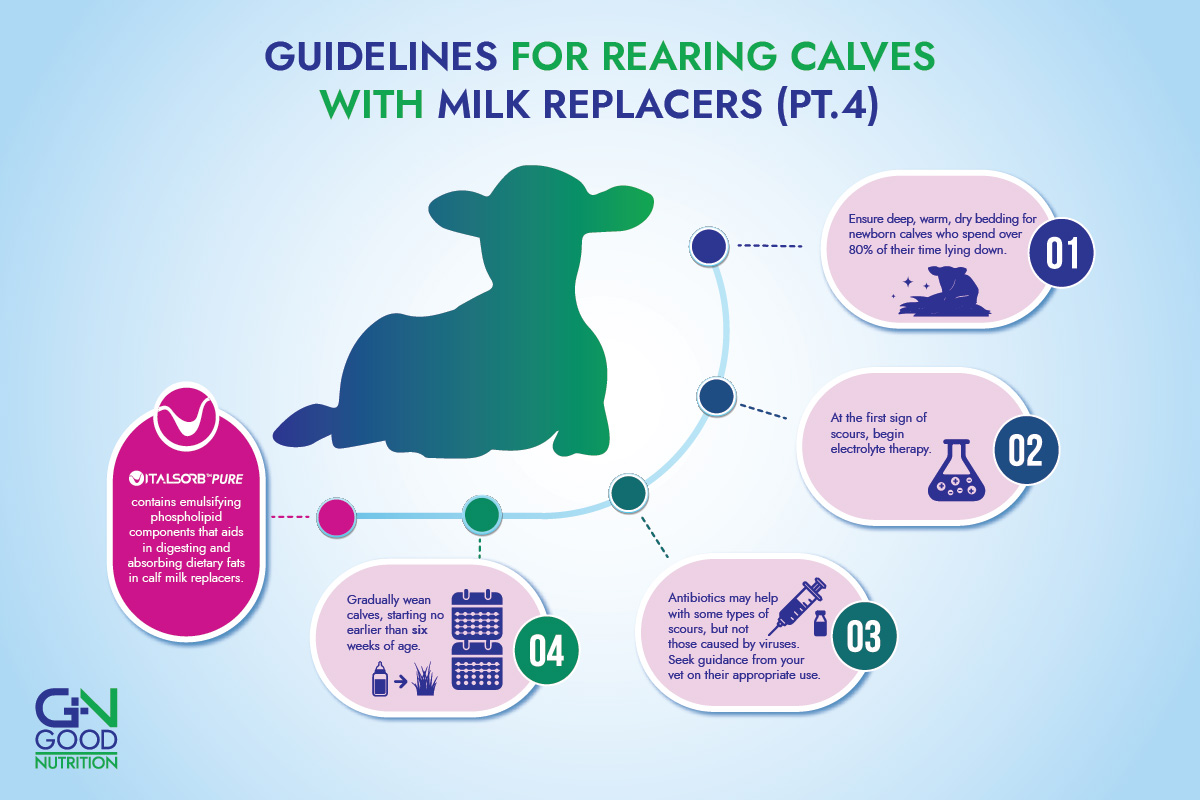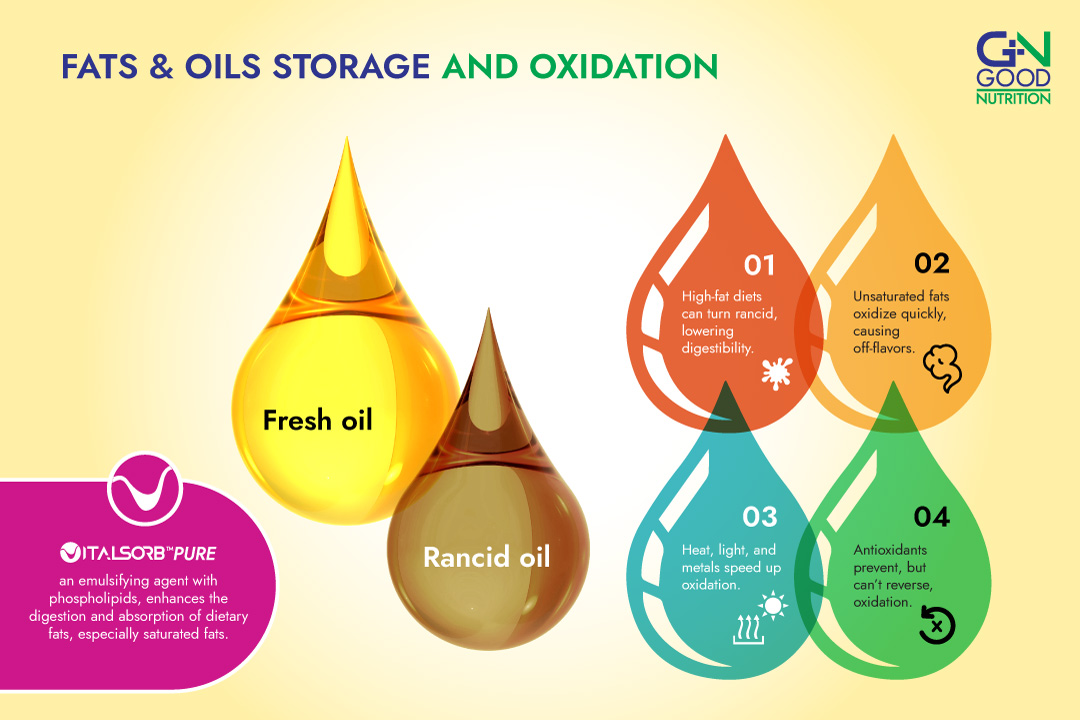Calf feeding and management practices have been shown to significantly impact lifetime performance, therefore they should be considered as an investment, not as a cost.
1. A new-born calf will spend over 80% of their time lying down, therefore it is important to always provide a deep, warm, dry bedding.
2. At the first sign of scours, begin electrolyte therapy.
3. Antibiotics may be indicated with scours, but many forms of scours are caused by microbes such as viruses which are not controlled by antibiotics. Consult your veterinarian for guidance on the use of antibiotics in scouring calves.
4. Wean no earlier than six weeks of age, in a step-down approach.
Vitalsorb™ Pure is an emulsifying agent containing phospholipid components to support oil-in-water emulsions for the superior digestion and absorption of dietary fats and oils, particularly saturated fats.





